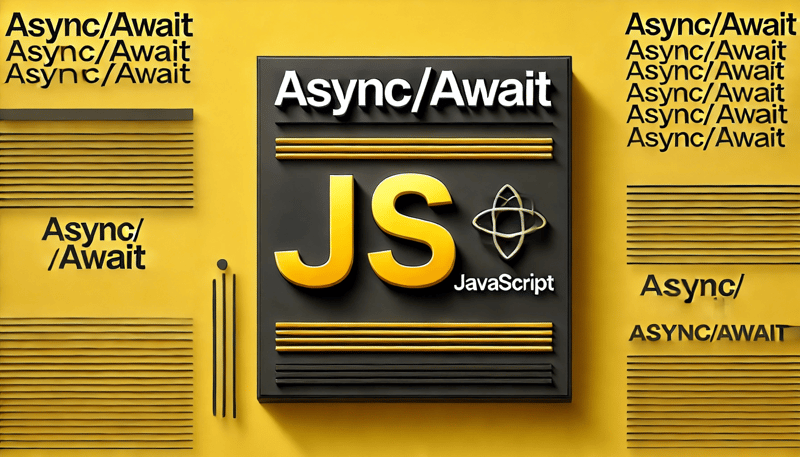
JavaScript 是一种单线程语言,这意味着它一次只能执行一个任务。然而,由于事件循环,它可以有效地管理异步操作,如获取数据、读取文件或处理用户交互,确保这些任务不会阻塞主线程。然而,Web 应用程序通常需要同时执行多个操作,例如从 API 获取数据、读取文件或处理用户交互。为了在不阻塞主线程的情况下有效处理这些任务,JavaScript 使用异步编程技术。在本文中,我们将深入研究异步 JavaScript 的核心概念:回调、Promises 和 Async/Await。理解这些概念对于构建响应式、高性能的 Web 应用程序至关重要。我们将通过详细的示例逐步探索每个概念,以帮助您了解如何有效地实施它们。
异步编程简介
异步编程允许您的代码在等待长时间运行的操作完成的同时执行其他任务。这对于创建响应式 Web 应用程序至关重要。让我们分解一下 JavaScript 中用于异步编程的三种主要方法:
每种方法都有自己的优点和缺点。了解这些方法将帮助您为您的特定用例选择正确的方法。
什么是回调?
回调是作为参数传递给另一个函数并在该函数完成后执行的函数。回调是 JavaScript 中的一个基本概念,广泛应用于异步编程、事件处理等领域。回调是 JavaScript 中最早用于处理异步操作的方法之一。
回调示例
让我们从一个简单的回调函数示例开始:
在这个例子中,fetchData 使用 setTimeout 模拟异步操作。操作完成后,它会使用获取的数据调用 displayData 函数。
回调的问题:回调地狱
虽然回调很简单,但在处理多个异步操作时,它们可能会导致深度嵌套的代码,这种现象称为“回调地狱”或“厄运金字塔”。
如您所见,嵌套的回调使代码更难阅读和维护。
什么是 Promise?
引入 Promise 是为了解决与回调相关的问题。 Promise 是一个表示异步操作最终完成或失败的对象。 Promise 具有三种状态:待处理(初始状态)、已完成(操作成功完成)和已拒绝(操作失败)。它允许您链接操作,使您的代码更具可读性。
承诺示例
以下是如何使用 Promise 重写前面的示例:
在这个例子中,每个异步操作都会返回一个promise,然后使用then方法来链接操作。
使用 Promise 进行错误处理
Promise 还使错误处理变得更容易。您可以使用 catch 方法来处理一系列异步操作中的错误:
什么是异步/等待?
Async/Await 是建立在 Promise 之上的语法糖,在 ES2017 (ES8) 中引入。它允许您以类似同步的方式编写异步代码,大大提高了可读性并简化了控制流程,特别是在处理多个异步操作时。它允许您以同步方式编写异步代码,使其更具可读性且更易于调试。
异步/等待示例
让我们将基于 Promise 的示例转换为使用 async/await:
使用异步/等待进行错误处理
async/await 中的错误处理很简单。您可以使用 try/catch 块来处理错误:
比较回调、Promise 和异步/等待
可读性
Error Handling
Use Cases
What Is the Main Advantage of Using Promises Over Callbacks?
The main advantage of using promises over callbacks is improved readability and maintainability of the code. Promises avoid the nested structure of callbacks, making the code more linear and easier to follow.
Can I Use Async/Await with Older Browsers?
Async/await is supported in most modern browsers. However, for older browsers, you may need to use a transpiler like Babel to convert your async/await code to ES5.
How Do I Handle Multiple Promises Concurrently?
You can use Promise.all to handle multiple promises concurrently. For example:
const promise1 = fetchData(); const promise2 = fetchMoreData(data); Promise.all([promise1, promise2]) .then((results) => { const [data, moreData] = results; console.log(data, moreData); }) .catch((error) => { console.error(error); });
Is Async/Await Always Better Than Promises?
Async/await is generally more readable than promises, but promises can be more appropriate in certain scenarios, such as when dealing with multiple concurrent operations.
How Do I Cancel an Asynchronous Operation?
JavaScript doesn't natively support canceling promises. However, you can use techniques like AbortController for fetch requests or implement your own cancellation logic.
Asynchronous programming is a fundamental aspect of JavaScript that allows you to build responsive and efficient web applications. Understanding the differences between callbacks, promises, and async/await is crucial for writing clean, maintainable code. By mastering callbacks, promises, and async/await, and understanding when to use each, you can significantly improve the readability, maintainability, and performance of your applications. This knowledge will empower you to tackle any asynchronous challenge with confidence and efficiency. Whether you choose callbacks for simple tasks, promises for chaining operations, or async/await for readability, mastering these concepts will make you a more effective JavaScript developer.
以上是异步变得简单:深入探讨 JavaScript 回调、Promise 和 Async/Await的详细内容。更多信息请关注PHP中文网其他相关文章!




